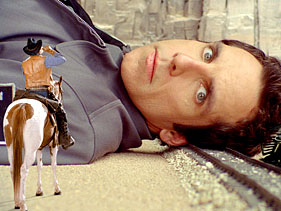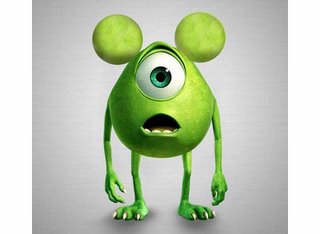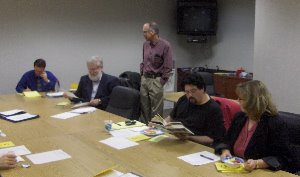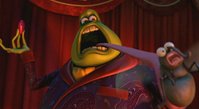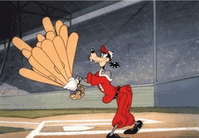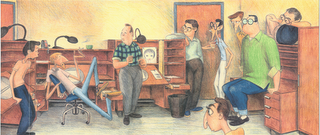Update on the Wyman Institute's Campaign for the Return of Dina Babbitt's Auschwitz Paintings
December 21, 2006
Dear friends:
I am writing to share with you the latest news about the campaign to help Mrs. Dina Babbitt regain the portraits that the Nazis compelled her to paint in Auschwitz, and to update you on our auction plans.
Mrs. Babbitt was recently featured on National Public Radio’s “All Things Considered” program. A transcript of the show is attached below. As you will see, the interviewer mentioned our petition by 450 cartoonists, animators, and comic book creators, led by Joe Kubert, in support of Mrs. Babbitt. Thank you again for participating in that important petition.
The Wyman Institute is moving ahead with a second petition by cartoonists and comic book creators, led by Roy Thomas (it is being signed by those who missed the first one); we are also circulating a petition by attorneys and legal scholars; and we will be developing school curriculum materials about Mrs. Babbitt's struggle.
As you know from our previous emails, the Wyman Institute is organizing an auction of comic and cartoon artwork, to support Mrs. Babbitt’s struggle. We are still early in this process, so there is plenty of time for additional artists to contribute. I hope you will consider doing so.
We have already received donated artwork from Ralph Bakshi (two pieces), Jackson "Butch" Guice (three pieces), Sal Amendola, James E. Lyle (three pieces), Guy Gilchrist (of the "Nancy" comic strip) and Greg Theakston.
In addition, pledges to contribute art have been received from John Romita, Jr., Ron Garney, Walter Simonson, Alan Weiss, Don Perlin, Michael Netzer, Mike Vosburg, Joe Rubinstein, Lynn Johnston ("For Better or For Worse"), Jim Keefe, Rob Stolzer, and Jesus Antonio. And Michael Moorcock has offered to donate pages from the manuscript of one of his books.
Would you please consider donating a new sketch, or a previously-published illustration or page, to this worthy cause? It can be a drawing of a character with which you have been associated, or any other characters you choose. All proceeds will be used strictly in support of the Wyman Institute's efforts on behalf of Mrs. Babbitt.
All artwork should be sent to:
Dr. Rafael Medoff, Director
The David S. Wyman Institute for Holocaust Studies
11738 Lovejoy St.
Silver Spring, MD 20902
With thanks in advance for your support and all best wishes for the holidays, Rafael Medoff

“All Things Considered” - National Public Radio, November 30, 2006
I’m Robert Siegel, and we’re going to hear now from 83 year old Dina Babbitt, who was born in what was then Czechoslovakia, where she went to art school. Many years later in Hollywood, she was an assistant animator whose hands contributed to some very familiar cartoons.
Dina Babbitt: For the past seventeen years, I was doing Cap’n Crunch. Before that, I was at Warner Brothers and I was doing Wily E. Coyote --which I didn’t like very much because of all the little things in it that have to be very carefully animated-- and Tweety Bird and all these things-- you know, everything that Warner Brothers had in its cartoon department.
RS: Now flash back several decades to 1944, and what Dina Babbitt was drawing was anything but comical. It was life-saving. Her name was Dina Gottliebova and, like thousands of her fellow Czech Jews, she was an inmate in the Auschwitz-Birkenau concentration camp. The notorious Dr. Josef Mengele wanted portraits of Gypsies to document what the Nazis saw as their degenerate racial characteristics. His photographs, he said, lacked the proper colors. He learned about the young Jewish artist who had painted a mural on the children’s barracks at Birkenau. So Dina was summoned, and told to paint. And by doing so, she survived.
DB: I was called to the sick bay where Dr. Mengele was standing, in a small room, behind a desk. And one of our Jewish doctors who was in there too, said to me, Dr. Mengele is going to keep you here, you don’t have to go on the transport. At which point I said, “What about my mother?,” and Dr. Hellman got very flustered, and said, “You can’t possibly--” And then Dr. Mengele interrupted and said, “What is her number?” You know, we had tatoos--
RS: Yes, tatoos on your arms.
DB: And I didn’t know [her number]. I forgot it. So he sent somebody to fetch my mom, and she came, and this is how my mother and I got on the list.
RS: Dina made nine watercolors for Mengele, nine portraits of Gypsy prisoners, nowadays we would call them Roma. In 1973, she learned that seven of the portraits are in the Auschwitz Museum [in Poland], and she’s been trying to gain ownership of them ever since. You can see what these watercolors look like at our website, www.npr.org. The museum says they are an integral part of the collection. Dina Babbitt says they are an integral part of her life. She vividly remembers the day in 1944 when Dr. Mengele, notorious for conducting experiments on inmates, set her up with a makeshift studio.
DB: And Mengele sent for two more chairs, so one chair was my easel and the other chair was for the subejct I was supposed to paint, and one chair for me to sit on. And I got a pad and paints, watercolors. Then he said to me to go and pick a subject outside. So I went out and there were a group of girls standing nearby, and I asked one would she please come and sit for me and I’m going to paint her. She came in, and I painted her. This is the girl with the red scarf. And when I finished her a few days later, to my surprise, he said I didn’t sign it, when he took it. And at first I asked him, “Do you mean my name or my number?” And he said, “Your name.” So, anyhow--
RS: And this was the first of nine portraits, I gather, that you did in watercolors.
DB: Yes, nine portraits, in watercolor. And two I did on my own camp, of two people--they were never found, or at least--I don’t know.
RS: Seven of these watercolor portraits had been acquired by or for the Auschwitz-Birkenau Museum, which has them--I’ve seen reproductions of them--they’re very striking, I’ve seen them on line. You say those are your drawisngs and you want them back.
DB: I want the originals back, because those I held in my hands in 1973 when I came there for the first time. I actually held them. They brought them to me. You know, I am all for them being repoduced as much as possible. I want the world to know that the Gypsies had a Holocaust, just like we did.
RS: Do you remember what it felt like back in 1944, to to be sitting across from a Gypsy prisoner at Birkenau?
DB: Well, the one I was closest to was Celine,that’s the second one, the one with the blue scarf. She had just lost her baby, it was two months old and it starved to death. She had no milk, there was no way she could feed it. I got white bread for her, because she said she couldn’t swallow, she couldn’t hold down the bread. That was crucial, of course, because we had such tiny rations that if you couldn’t eat what was given to you, that was a death sentence right there. So luckily, Mengele sent his orderly, who was bringing me my soup every day, to bring me white bread, which I could share--I gave it to Celine, of course. And therefore I painted her slowly, because I wanted to be with her as long as possible. So I think it took about a week to do Celine.
RS: How did you sit across from these people, doing a task for Josef Mengele, one of the truly criminal characters of the twentieth century, trying to make something beautiful out of that watercolor?
DB: It was a litlte bit of an escape for me too, you know. I have been always painting and sculpting. The fact that I had a chance to do it in Birkenau and Auschwitz was a bit of an escape, although the starvation was still rampant. I mean, you don’t know what it feels like to be hungry without any chance of appeasing it. It’s a different thing than being hungry for lunch or for dinner here. It’s a pain, it’s a physical pain in your stomach. So I was sitting there, painting, and for a moment I could forget about all that. Also, if you look into somebody’s face, doing a portrait, you look into that person, you look inside of the person. And for a moment, you become involved with--you are almost one. You can see what the person is thinking about or what his past was, or so on. Anyway, with Celine it was an instant friendship and it came out in the paintings. So I am attached to these paintings. and I don’t understand anybody who can possibly try to keep them from me. Can you?
RS: Dina Babbitt’s request for the originals of her watercolors has been supported over the years by a Sense of Congress resolution and a petition signed by hundreds of cartoonists and animators.
The Auschwitz-Birkenau Museum states its position on its web site. It says, in part, “Both death certificates and prisoner cards produced in large number by scrupulous Nazi camp bureaucracy and works of art created in the camp, either made by prisoners on orders of the SS or illegally, are unique documents and pieces of evidence, having the greatest meaning, significance and impact in the place of their creation.”
